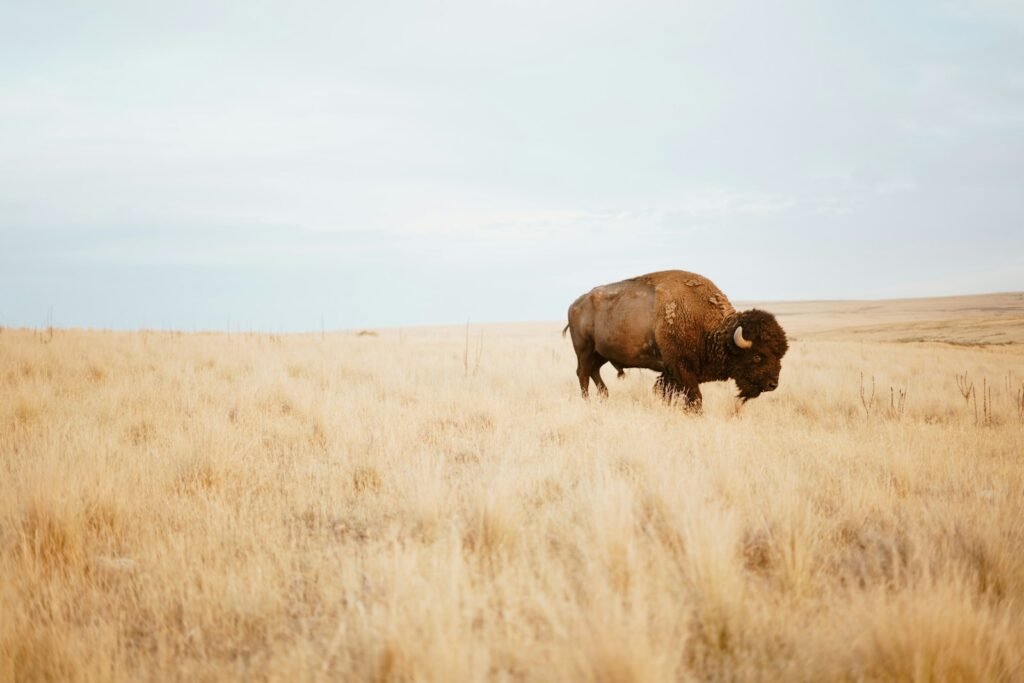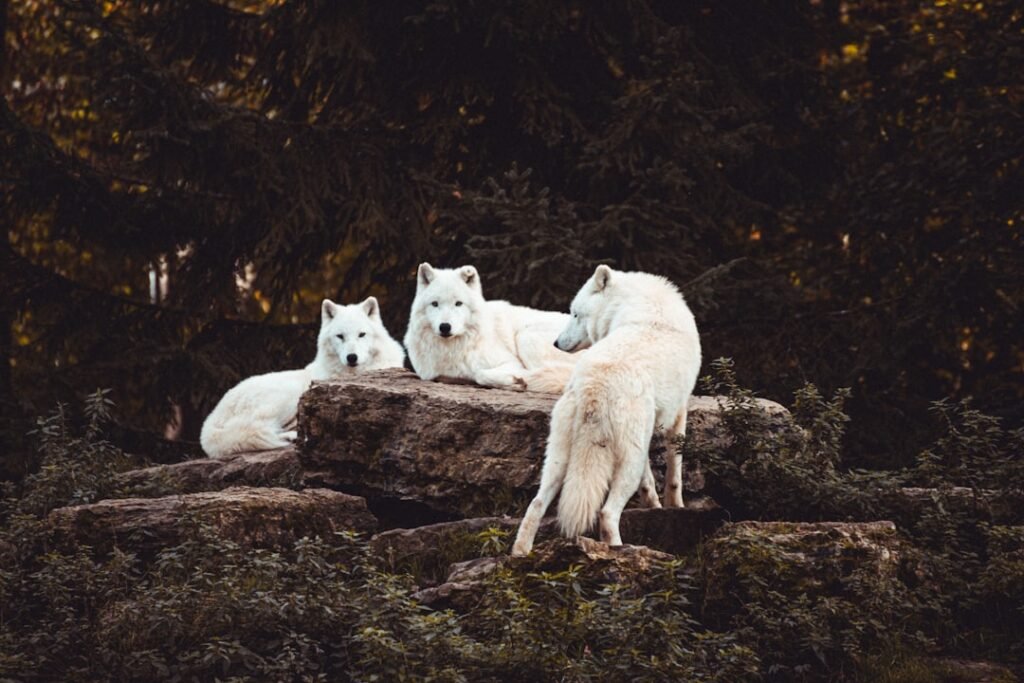At first light on the sagebrush steppe, the silhouettes look like moving hills – then a calf kicks, dust lifts, and the plain feels alive again. Wyoming’s bison are edging back into places where their hoofprints once stitched the land like a living quilt, and the change is more than scenic. It’s a story of patient science, tribal leadership, rancher partnerships, and hard choices about fences, forage, and disease control. After a century of contraction, herds linked to national parks, reservations, and conservation ranches are growing, and the habitat around them is being rebuilt piece by piece. The result is a cautiously optimistic comeback that carries lessons far beyond state lines.
The Hidden Clues

What does recovery look like when it’s still fragile? It’s the ripple of a wallow holding rain after a late-summer storm and the bright, coppery coats of calves threading through sage. It’s a trail of clipped grasses that zigzags toward a creek, and meadowlarks riding the taller stems left behind.
I watched one herd near dusk and noticed a small thing that felt enormous: grasshoppers scattering in a wake of hooves, then a vesper sparrow dropping in to feed. These tiny exchanges add up to a landscape re-learning its rhythms. Herd size alone doesn’t tell the story; behavior and habitat use do, and those clues are increasingly visible across parts of western Wyoming.
From Ancient Tools to Modern Science

Indigenous knowledge never forgot what the prairie once knew instinctively: bison shape grasslands as much as grasslands shape bison. That insight now guides modern restoration on the Wind River Reservation, where tribal wildlife teams blend cultural priorities with wildlife biology. Seasonal moves, respectful handling, and careful pasture rotations echo lessons refined over generations.
Layered onto that are tools the ancestors never needed: GPS collars drawing migration arcs, drones mapping forage regrowth after a graze, and genomic screens tracking cattle gene introgression risk. Managers pair low-stress handling with multi-year disease testing that allows translocated animals to seed new, brucellosis-free groups. The result is a feedback loop – old wisdom steering new tech, and new tech validating old wisdom.
On-the-Ground Science

Wyoming biologists and tribal partners monitor more than headcounts; they track plant community shifts, soil stability, and streambank resilience in places bison frequent. Permanent plots capture whether native cool-season grasses rebound after grazing pulses, and whether forbs that pollinators love can hold their ground. In drought years, these data show where herds need relief and where pastures can carry the load.
Field crews also run camera grids to see how other wildlife responds when bison return. Pronghorn, sage-grouse, and songbirds often key in on the patchy mosaic left by grazing and fire. That mosaic – short here, tall there, and scorched-to-green along burn scars – is precisely the habitat structure many Great Plains species evolved with.
The Habitat Piece: Grass, Water, and Fences

Population growth only sticks when the stage is set, and that stage is habitat. Across working lands in western Wyoming, landowners are swapping out old, low bottom wires for wildlife-friendly fencing that lets calves and pronghorn slip through. Riparian crews are restitching creek bends, planting willows, and letting beavers do some of the engineering to slow water and rebuild spongey floodplains.
On restoration pastures, prescribed fire is used like a paintbrush, drawing fresh green-up that bison prefer and spreading grazing pressure more evenly. Weed control targets invasive grasses that crowd out natives after disturbance. Season by season, these actions create breathing room so herds can graze, move, and winter without squeezing other species off the map.
Why It Matters

Bison aren’t just big grazers; they’re keystone engineers that reset grasslands and spark biodiversity. When they move, they churn seeds into soil, clip dominant grasses, and open space for wildflowers to surge. Their wallows trap water, turning brief storms into micro-wetlands that feed insects and birds.
Consider a few anchor points that guide policy and partnerships:
– Bison-focused grazing creates patchy, uneven grass heights that many prairie birds need.
– Habitat projects that help bison – like fence fixes and riparian restoration – also cut wildlife-vehicle collisions and boost drought resilience.
– Tribal-led herds diversify the conservation map, adding secure, culturally grounded places for growth and gene flow.
Global Perspectives

Wyoming’s story is part of a broader grassland revival that stretches from prairie preserves in the Dakotas to European bison forests in Poland and beyond. The common thread is learning to live with large herbivores again, not as museum pieces behind fences but as dynamic neighbors. In Europe, bison now browse edges of human-dense landscapes, teaching managers how to share space without constant conflict.
Back home, Wyoming is testing that balance in a working-lands context. Here, cattle operations, elk migrations, and bison herds overlap on a patchwork of private, tribal, and federal lands. The playbook that succeeds will likely be one that respects livelihoods while giving big animals room to be themselves.
The Future Landscape

Emerging tools could make the next decade decisive. Satellite forage models are getting good at predicting green-up weeks in advance, which helps managers rotate herds before pastures fatigue. Environmental DNA sampling from stock tanks and creeks can confirm presence without a single chase or collar.
Policy innovations matter just as much. Expanded conservation transfer programs are moving disease-free animals from crowded park herds to tribal and conservation lands where they can anchor new lineages. Insurance-style funds are also being tested to cushion ranchers when wildlife and livestock goals collide, turning potential flashpoints into solvable problems.
The Hidden Work of Coexistence

Brucellosis management remains the thorniest point on Wyoming’s map. It’s why quarantine protocols and testing regimes are so careful and so long, and why boundary decisions around key winter ranges can ignite debate. Managers are threading a needle: protecting ranch economies while allowing wild herds to behave like wild herds.
Transportation corridors add another layer, especially where wintering animals cross plowed highways. County-led wildlife crossing projects, coupled with seasonal speed management, are reducing risk and buying time for longer-term fixes. None of this is flashy, but it’s the daily scaffolding that keeps progress from slipping.
People on the Front Lines

Recovery is built by people who carry fence pliers more often than headlines. On the Wind River Reservation, herd managers are expanding pasture networks and timing moves to rest native grasses. Around Jackson Hole, coordinated hunts and targeted hazing are used to keep numbers within habitat limits while preserving wild behavior.
Private land stewards round out the picture by hosting migratory use on shoulder seasons and experimenting with grazing that mimics natural pulses. I still think about a spring morning near Moran when a rancher pointed to a pasture he’d burned in stripes; within days, bison had stitched those black bars into green ladders. It was a reminder that creativity is as important as acreage.
What Comes Next

Real success will mean more connected herds that can swap genes across the state over decades, not just headline years. That points to corridors threading public lands, tribal ranges, and cooperative private pastures. It also means planning for hotter summers and more variable snowpacks that will test water and forage.
Expect the map to keep changing as new parcels enter easements, as communities identify where crossings make the most difference, and as science refines how many animals each pasture can support in lean years. If the past five years have taught anything, it’s that steady, local wins compound into something that looks a lot like a comeback.
Conclusion

If this story moves you, start close to home. Support tribal and local conservation groups working on fence pulls, creek plantings, and corridor planning; a single weekend can flip a mile of wire from barrier to gateway. Drive slower at dawn and dusk on signed corridors, advocate for wildlife crossings in your county, and report damaged fences promptly when you’re on public lands.
Ask your representatives to back long-term funding for collaborative bison restoration and grassland research, not just one-off grants. And if you’re a landowner, consider wildlife-friendly fencing and seasonal grazing strategies that keep native grasses resilient. Big recoveries are built from ordinary choices repeated by thousands of people.

Suhail Ahmed is a passionate digital professional and nature enthusiast with over 8 years of experience in content strategy, SEO, web development, and digital operations. Alongside his freelance journey, Suhail actively contributes to nature and wildlife platforms like Discover Wildlife, where he channels his curiosity for the planet into engaging, educational storytelling.
With a strong background in managing digital ecosystems — from ecommerce stores and WordPress websites to social media and automation — Suhail merges technical precision with creative insight. His content reflects a rare balance: SEO-friendly yet deeply human, data-informed yet emotionally resonant.
Driven by a love for discovery and storytelling, Suhail believes in using digital platforms to amplify causes that matter — especially those protecting Earth’s biodiversity and inspiring sustainable living. Whether he’s managing online projects or crafting wildlife content, his goal remains the same: to inform, inspire, and leave a positive digital footprint.



